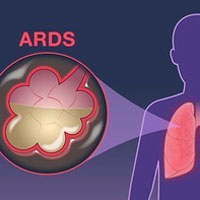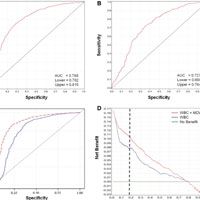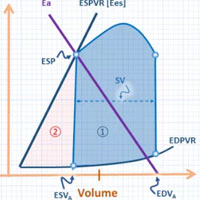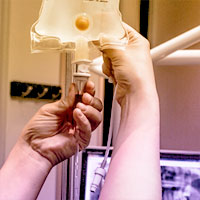Tag: study

ARDS Survivors Often Leave ICU with Prolonged PICS
Patients who survive acute respiratory distress syndrome (ARDS) often leave ICU with debilitating mental, physical, or cognitive problems that may limit their quality of life. These challenges are called post-intensive care... read more

qSOFA Performance Score as Prognostic Tool in Infected Patients Outside the ICU
A positive qSOFA score had high specificity outside the ICU in early detection of in-hospital mortality, acute organ dysfunction, and ICU admission, but low sensitivity may have limitations as a predictive tool for adverse... read more
Withdraw Life-Sustaining Treatments for Patients with Severe TBI
The decision to withdraw life support from patients with severe brain injuries is very difficult. In a study conducted in Canadian Medical Association Journal, critical care physicians were asked about the decision-making... read more

Early Neuromuscular Blockade in the ARDS
Among patients with moderate-to-severe ARDS who were treated with a strategy involving a high PEEP, there was no significant difference in mortality at 90 days between patients who received an early and continuous cisatracurium... read more

Detection of Brain Activation in Unresponsive Patients with Acute Brain Injury
A dissociation between the absence of behavioral responses to motor commands and the evidence of brain activation in response to these commands in EEG recordings was found in 15% of patients in a consecutive series of patients... read more

Subanesthetic Ketamine Infusions for the Management of Pediatric Pain in Non‐critical Care Settings
Ketamine can effectively be used as part of a multimodal analgesic regimen in pediatric patients in non‐critical care settings. Our five‐year experience using low‐dose ketamine infusions highlights an acceptable side... read more

Effective Sepsis Detection with Peripheral Blood Monocyte Distribution
This study evaluated the diagnostic accuracy of peripheral blood monocyte distribution width alone and in combination with white blood cells (WBCs) count for early sepsis detection in the emergency department. An monocyte... read more

Venous Doppler and Veno-Cardiac Coupling
Concepts have been clanging around my head since I participated in Philippe Rola's sedulous Hospitalist & Resuscitationist Conference in Montreal. Initially, the abstractions of ventriculo-arterial coupling, Guytonian physiology... read more

Metabolic sepsis resuscitation: the evidence behind Vitamin C
Sepsis resuscitation generally focuses on hemodynamics. Rivers of ink have been spilled writing about oxygen delivery and fluid responsiveness. This is clearly important, but it's possible that our focus on easily... read more
What Happens After a Positive Screen for Depression and PTSD in the Outpatient Burn Clinic?
Multiple reports have demonstrated a wide prevalence of both depression and post traumatic stress disorder (PTSD) within 1 year of burn injury. The purpose of this study is to determine outcomes of burn patients after a positive... read more

Sedatives in Neurocritical Care
Extrapolating the findings from studies in the general ICU population suggests to reserve deep continuous sedation in the neuro-ICU for specific indications. Although an improved understanding of cerebral physiological changes... read more

Low-value Clinical Practices in Acute Injury Care
This study fills a major knowledge gap on medical procedure overuse in acute injury care. Results will inform research priorities and the development of metrics to measure overuse. This knowledge will provide a solid basis... read more

Phenotyping: Need to Identify Subgroups of ARDS Patients
The consensus definitions of acute respiratory distress syndrome (ARDS) mainly rely on feasible clinical criteria, which help to group patients together for inclusion in clinical trials and for clinical management. This generates... read more

Peripherally Inserted Central Catheters in the ICU
A retrospective study of adult medical patients in 52 hospitals. 27,289 patients with peripherally inserted central catheters placed during hospitalization. Peripherally inserted central catheter use in the ICU is highly... read more




